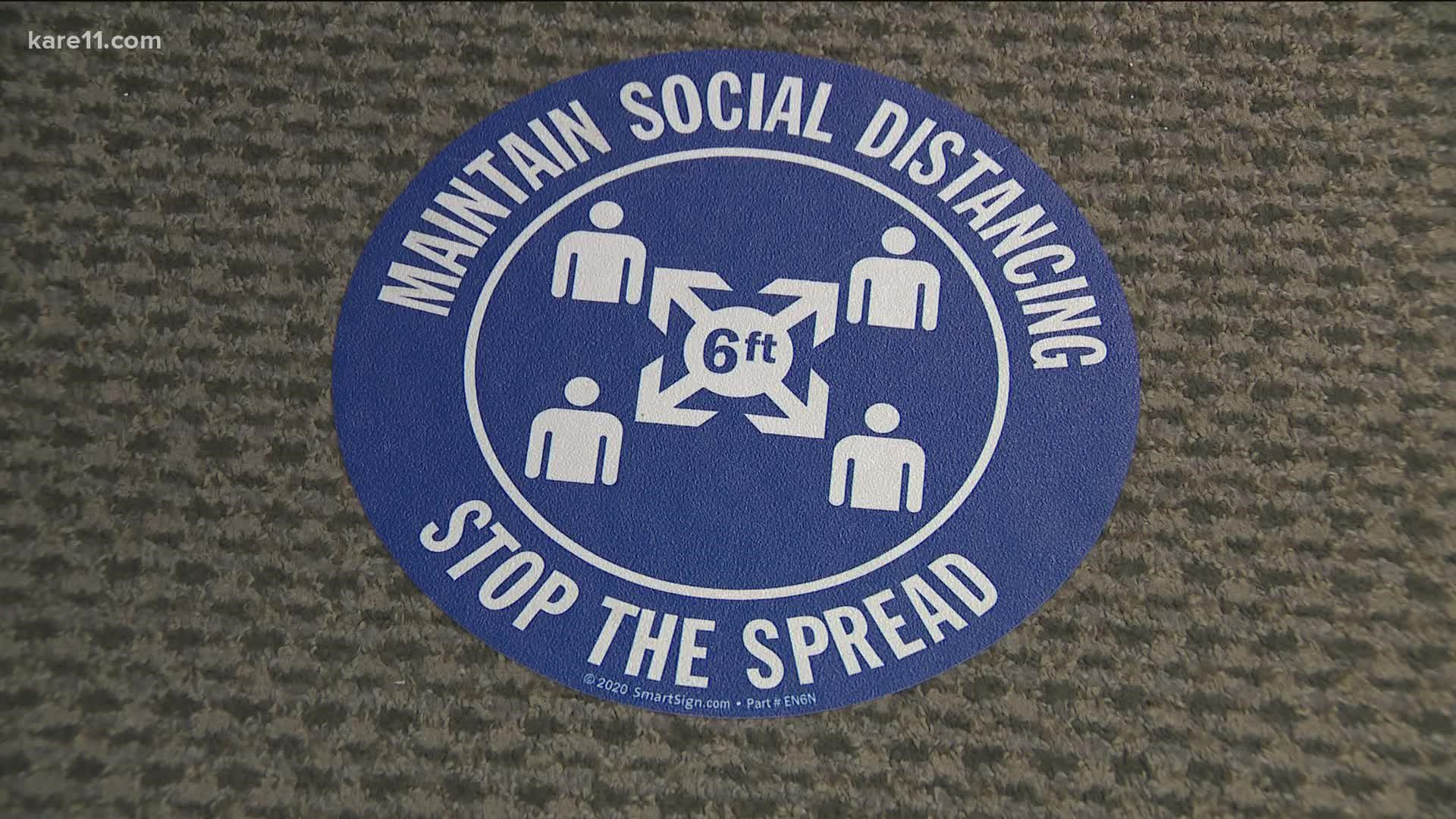SAINT PAUL, Minn — All this week we're looking at what it's like to get back to school, sports, even the State Fair, amid a new round of uncertainty due to the delta variant.
We’re now looking at the return to work, and what people have learned worked best, and what didn’t work so well, when it comes to COVID and the workplace.
"Businesses, employers and employees have a lot of questions,” workplace safety consultant Ben Wood said.
Wood is the man with all the answers, or some of the answers, because these days nothing is certain and nothing is easy.
"When it comes to workplace safety and health, we're kind of dealing with a new monster,” Wood said.
Wood works for the State of Minnesota, and it’s his job to help companies set up COVID safety plans to keep employees and customers safe.
"There really isn't a ‘one size fits all,’ or a ‘silver bullet,’" Wood said.
Over the last year and a half they've learned a lot about what works and what doesn't.
In the beginning, it was all about hand hygiene, cleaning surfaces and touchless technology, but Wood says that's only a small piece of the puzzle. What's even more important is cleaning up the air that people breathe.
"Because one thing we still continue to learn about this virus is the virus can remain aerosolized and if you don't clean out that air and turn over that air, the virus can certainly be passed along by lingering in an area,” Wood explains.
That's why many companies went out and bought big expensive air conditioning units and ventilation systems so they could eventually bring people back to the office.
Many companies also installed glass or plastic barriers to protect employees who share work spaces, but Wood says experts now believe those barriers only offer protection in certain settings.
"Barriers are very useful in terms of short-term engagements. So, if you think about your ticket counters, your checkout stations, but if you’re talking about an environment where you have a group of people sustained in an area for long periods of time, those are the types of situations where if the virus becomes aerosolized, it can certainly circumvent the safety of the barrier,” Wood said.
Consultants and companies have discovered a lot of new inventions and technology that can help keep employees and customers safe, but Wood says the cheap, little things, are actually making the biggest difference.
“Social distancing continues to be a key,” Wood says. “Also, the use of face coverings is still significantly important.”
So, companies can’t necessarily buy their way out of this problem.
Wood says even the best gadgets and gizmos can’t replace good planning and procedures.
"I think the most important strategy that companies can use is continuously monitoring their employees and screening their employees,” Wood said.
And encouraging them to stay home when they're sick and being more open to working from home.
Some companies don’t have that luxury, including companies that work in the food service industry, manufacturing industry or retail industry.
Wood says those industries should continue to be flexible and innovative with different ways of doing business.
“The delivery option, the curbside pickup and other unique options will continue to play a role,” Wood said.
Other companies that can work from home have already decided to extend their work-from-home policies.
With the delta variant creating a new spike in cases, many big companies have pushed back their return-to-work date, from Wells Fargo pushing it back a month, to Amazon pushing it back to January of next year.
"I think businesses really need to be conscious of the fact that we are still in the midst of a pandemic,” Wood said.
"Businesses really have to take this day by day, week by week."

